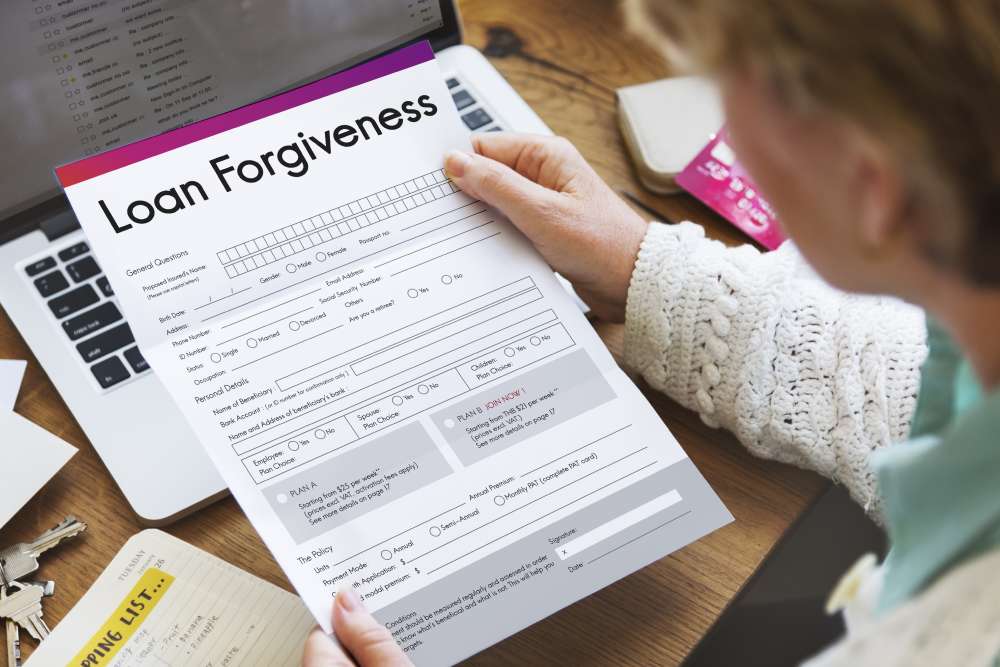Loan Forgiveness – Eligibility Criteria and Application Process
Loan forgiveness is a financial aid program that brings a borrower some or complete relief from loan repayment. This is applicable only under specific circumstances, and the program is most commonly associated with student loans and other industries. Loan forgiveness is generally offered to individuals who meet certain eligibility criteria, which include the borrower’s profession, repayment plan, and loan type. Different loan forgiveness programs have unique rules, application processes, and timelines.
Eligibility for loan forgiveness
Several factors govern the eligibility for loan forgiveness. The organizations take into account one’s employment history, loan type, repayment plan, and other qualifying payments. Loan forgiveness programs are commonly applicable on loans directly issued by the U.S.

Loan type
Loan forgiveness is only applicable to federal student loans. The plans can be readily approved if the person has a Direct Loan. Holders of private loans are not eligible for federal forgiveness services.
Repayment plan
Repayment plans are essential in deciding one’s eligibility for loan forgiveness. Individuals who are on qualifying income-driven repayment plans are more likely to get approval for forgiveness.
These plans set the monthly repayment amount based on the individual and family’s income. It caps the repayment at a specific sum, lowering the burden and gradually building up eligibility.
Qualifying payments
Each federal loan requires individuals to make a qualifying number of full payments. The required full payments might differ based on the loan type. For example, for Public Service Loan Forgiveness (PSLF), one needs to make around 120 payments, which have to be made on time, scheduled, and in full.
Individuals who make full payments no later than 15 days of their scheduled date are considered to make in-time repayments. Skipping payments or underpayments, except under special circumstances, can delay one’s eligibility. It is essential to carefully track payments and work on building a good history with the loan service providers.
Employment
Depending on the loan type, forgiveness programs require individuals to work full-time. Employers are among the crucial factors that decide a person’s eligibility for forgiveness programs. Having a qualifying employer is more important than the person’s job title. A government organization at the federal, state, local, or tribal level are qualifying employers . Certain other nonprofits that provide qualifying public services, such as emergency management, public wellness, or early childhood education also qualify.
No defaults
Borrowers in default are typically not eligible for forgiveness. They need to take steps to bring their loans back into good standing to requalify. Default is when a person misses repayments for 270 days or more. This period is applicable for federal loans and can differ for other loans. Defaulting can disqualify a person from nearly all federal benefits, including forgiveness programs.
To regain eligibility for these benefits, Borrowers can rehabilitate their loans with on-time payments. They are required to make a certain number of payments over a given time. For example, nine payments over a period of ten months. Alternatively, they can consolidate their defaulted loans into a new Direct Consolidation Loan and begin repayment under a qualifying plan.
Annual employment certification
Loan forgiveness is not automatically approved. Most programs require borrowers to take action to be eligible for forgiveness. This includes submitting forms, certifying information, or updating details annually. PSLF applicants, for example, need to submit the updated Employment Certification Form every year. The form should also be submitted when switching jobs. Some participants, based on loan and forgiveness plans, are required to submit income certificates annually. There also might be the need to recertify family size to remain on the plan. Maintaining qualifying payments so as not to lose eligibility status is another factor to take care of. Failing to complete and submit the required forms can result in disqualification. Alternatively, it might result in a reset of payment count. This makes documentation critical to stay on track.
Special conditions that can qualify someone for a loan forgiveness program also include:
- Borrowers with disabilities may qualify for Total and Permanent Disability (TPD) Discharge.
- If a school closes while a Borrower is enrolled or shortly after they withdraw, they might qualify for a Closed School Discharge.
- In cases of fraud or misrepresentation by a school, student loan borrowers may be eligible under the Borrower Defense to Repayment program.
How to apply for loan forgiveness
Following the right steps is crucial when applying for loan forgiveness. The process commonly depends on the program under which one is applying. Commonly, individuals, including seniors, apply for student loan forgiveness. The general application process can be broken down into certain steps that include –
Identify the right program
Before applying, individuals need to know about different loan forgiveness programs. Public Service Loan Forgiveness (PSLF), Income-Driven Repayment (IDR) Forgiveness, Teacher Loan Forgiveness, Borrower Defense to Repayment, Total and Permanent Disability (TPD) Discharge, and Closed School Discharge are among the common programs. Each program has its own criteria based on loan type, employment, repayment history, or life circumstances.
Confirm eligibility
For student loan forgiveness programs, one must visit the studentaid.gov and log in to their site account. Go to the profile dashboard or the Loan Simulator. This will allow users to check the types of loans they have. It can also be helpful in finding out forgiveness programs or other benefit plans that the person might qualify for.
Follow up with the loan servicer
The loan servicer processes the paperwork submitted for the program application. They may know about any additional documentation that can strengthen the application. Individuals with some missing documents can seek their assistance and determine a way to procure or substitute those papers. Moreover, loan service providers can provide updates about a person’s application status. Remember to keep copies of all forms being submitted. Also, monitor the profile for any change and keep records of any representative who gets in touch during the process.
